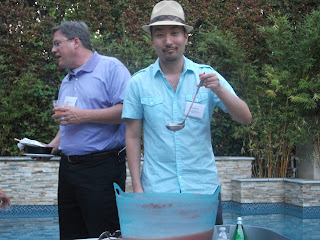Today, we began with a long discussion about North Korea. Is it really a threat? Will the Koreas every be unifed? Dr. David Kang, the specialist on North Korea at USC and the guy the news media always calls when they have a question about the Hermit Kingdom, says that the issue is very complicated. The North Korean regime is on its third leader from the same family, but it is a Confucian dictatorship. The people's loyalty is to their leader and the "father" of their country Kim Il Sung. They revere him so much and believe that his son and grandson were and are legitimate rulers as well. The Confucian values of the North Korean people make loyalty to their leader their number one priority. And since they are united against a common enemy, the U.S., they have a cause that keeps them patriotic and xenophobic.
The regime's story is this:
1.
We are the true Koreans.
2.
We are protecting you from the west and Japan.
3.
If that requires sacrifice, it is a price we
will pay.
The Koreas maybe united one day, but according to Dr. Kang, it will be very expensive for the South Koreans, because they will have to support the North and bring up their standard of living. And, the best way to topple the regime is to show them that capitalism and its economic benefits are the way to go. In other words, there will be no Arab Spring in North Korea.
There is hope though. Check out this article about the "Choco Pie Effect":
http://blog.keia.org/2011/11/north-korea%E2%80%99s-choco-pie-economy/
On the lighter side, for lunch we went to a Korean restaurant and had rice-stuffed roasted chicken in ginger/garlic broth. Yum, yum! Korean comfort food.
After lunch, we went to the local Buddhist temple and were lead in chants and meditation by The Venerable Jongmae Park. I hope I win his book about Buddhism in the drawing tomorrow. He has a Dalai Lama vibe to him. He is a peaceful man who has compassion for others and a wicked sense of humor. He suggested that a good time to meditate is while you are sitting on the toilet in the morning.
After learning that desire causes suffering, we journeyed to the Korean shopping mall. It was like any other mall except it had a Korean food court and a Korean grocery. I will try to bring some goodies back to share.
Tonight, my friend Manuel is taking me to authentic southern Mexican food. A rare treat he tells me. This good, I like Korean food, but it is time for a change.

































.jpg)
